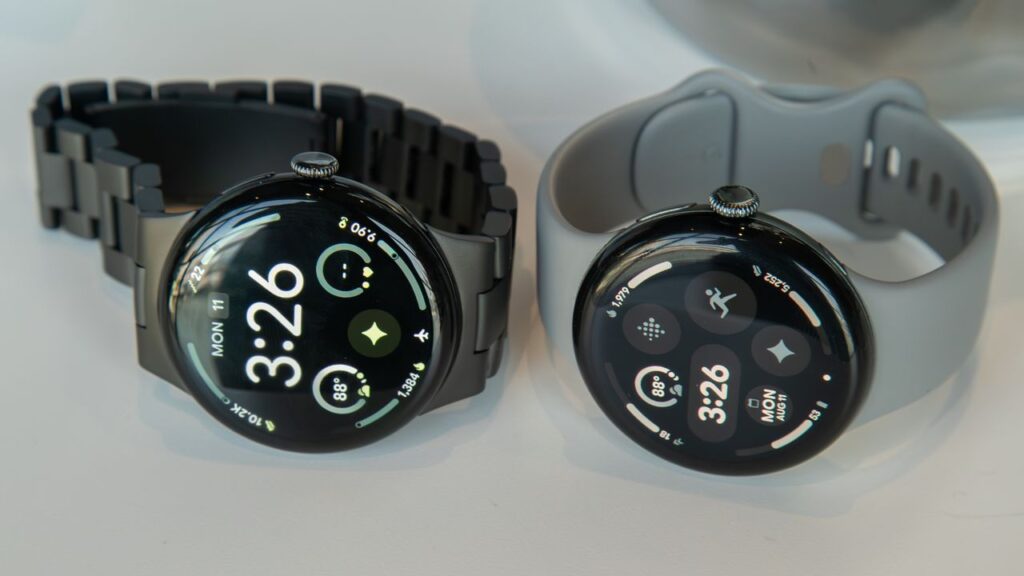Time’s Up? Google Pulls Clock App Support for Non-Pixel Wear OS Watches
If you’re rocking a Wear OS smartwatch that isn’t a Google Pixel Watch, you might want to double-check your alarm settings. Google has announced it’s phasing out its official Clock app support for all non-Pixel Wear OS devices. This means users with smartwatches from brands like Samsung, Fossil, Mobvoi, and others will soon need to rely on alternative clock solutions.
The news, while not entirely unexpected given Google’s increasing focus on its Pixel hardware, has left many Wear OS users wondering about the implications and what steps they need to take to maintain the core functionality of their smartwatches. Let’s dive into the details and see what this change really means for you.
What’s Happening and Why?
The Clock App Departure
The core of the matter is simple: Google is discontinuing the availability and support for its own Clock app on non-Pixel Wear OS devices. While the specifics of the timeline are still emerging, the transition is expected to happen soon. This means that existing alarms, timers, and other clock-related features provided by Google’s app will eventually cease to function on these devices. This might seem like a minor issue, but the Clock app is a fundamental part of any smartwatch experience, making this a noticeable change.
The Pixel Focus
The most likely reason behind this move is Google’s increased emphasis on its own Pixel Watch line. By removing its Clock app from other devices, Google is potentially creating a greater distinction between the Pixel Watch and its competitors. It also gives Google greater control over the software experience on their devices. This control can lead to tighter integration and optimizations exclusive to Pixel Watch users.
Implications for Users
For non-Pixel Wear OS users, this means relying on the clock app provided by their smartwatch manufacturer (e.g., Samsung’s or Fossil’s own clock app) or finding a third-party alternative. It’s important to note that most manufacturers already include their own clock apps alongside Google’s. The change primarily affects users who preferred Google’s app or depended on its specific features. This could be particularly disruptive for users who heavily rely on alarms or timers for daily tasks.
Finding Alternatives and Ensuring a Smooth Transition
Checking Your Watch’s Built-In Clock App
The first thing you should do is explore the clock app that came pre-installed on your smartwatch. Most manufacturers offer fully functional clock apps that include alarms, timers, stopwatches, and world clock features. Take some time to familiarize yourself with its features and settings. Make sure that it meets your needs. If it does, you can simply switch over and avoid any disruption.
Exploring Third-Party Clock Apps
If you’re not satisfied with the built-in option, the Google Play Store is full of third-party clock apps for Wear OS. Apps like “Wear Timer” or “Alarmy” can provide additional functionality and customization options. Read reviews and carefully examine the features before installing any third-party app. Ensure it’s compatible with your specific Wear OS version and provides the features you require.
Migrating Alarms and Settings
Before Google’s Clock app stops working, make sure to transfer any crucial alarms or timers to your new clock app of choice. This might involve manually recreating your alarms. However, it’s a necessary step to avoid missing important appointments or reminders. Set a reminder to check your new alarm settings after the transition to ensure they’re functioning correctly.
The Future of Wear OS: Ecosystem Fragmentation?
Potential for Feature Disparity
This decision raises concerns about the fragmentation of the Wear OS ecosystem. By prioritizing its own hardware, Google risks creating a situation where features and updates are not consistently available across all Wear OS devices. This could lead to a less unified and potentially less appealing experience for users who choose smartwatches from other brands.
Encouraging Manufacturer Innovation
On the other hand, this change could also encourage smartwatch manufacturers to invest more in their own software and features. By relying less on Google’s default apps, manufacturers have the opportunity to differentiate their products and offer unique experiences to their users. This could lead to greater innovation and a more diverse range of Wear OS smartwatches.
Google’s Balancing Act
Ultimately, Google is walking a tightrope. It wants to promote its Pixel Watch as the flagship Wear OS device while also maintaining a healthy ecosystem for other manufacturers. Removing core app support risks alienating users and partners. However, it can also incentivize innovation and differentiation. Only time will tell how this strategy plays out in the long run.
Don’t Get Caught Off Guard: Be Prepared!
The removal of Google’s Clock app from non-Pixel Wear OS devices is a significant change that could affect many users. By understanding the implications and taking proactive steps to find alternative clock solutions, you can ensure a smooth transition and avoid any disruptions to your daily routine. Take the time now to explore your options, migrate your alarms, and familiarize yourself with your new clock app of choice. Being prepared is key to keeping your Wear OS smartwatch ticking along seamlessly.
Remember to stay informed about future Wear OS updates and announcements from both Google and your smartwatch manufacturer. By staying informed, you can navigate the evolving landscape of Wear OS and ensure that your smartwatch continues to meet your needs. Don’t wait until the last minute – start exploring your options today!
